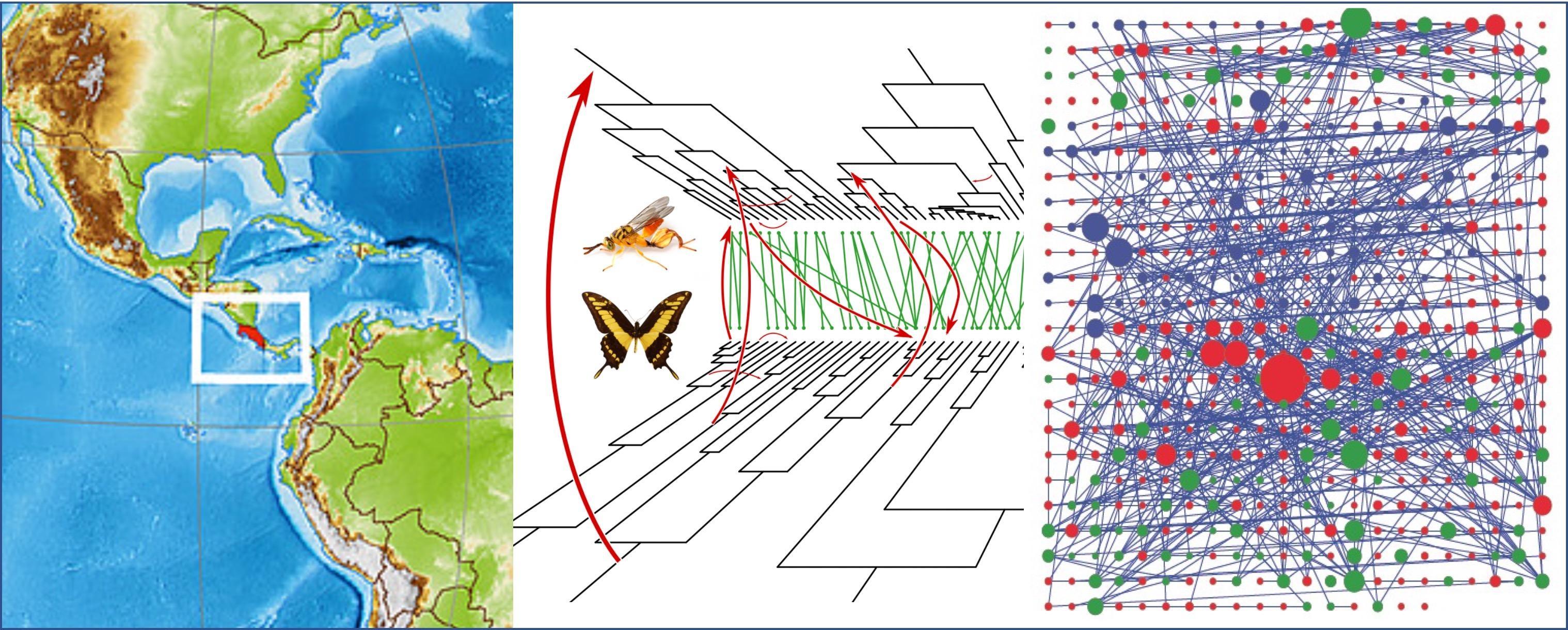
COEVOL Multi-Scale Coevolution
Evolutionary Genetics of Interactions Group
Charlat Sylvain
Chargé de recherche
CNRS
Who are I? Who am we?
These enigmatic questions, borrowed from my colleague and friend Fabrice Vavre, run through most of my work.
Who are I? Who am we?
These enigmatic questions, borrowed from my colleague and friend Fabrice Vavre, run through most of my work.
- Who are I? What multitude of genes, cells, symbiotic partners, compose biological "individuals"? And to what extent do these different degrees of organization also constitute individuals, i.e., effective targets of natural selection, carrying adaptations of their own, potentially deleterious at other scales?
- Who am we? To what extent should the collective, from the ant colony to the ecosystem, also be perceived as an incipient individual ?
As opportunities of collaborations arose, these questionings gave rise to various research projects that are briefly described below. Symbiotic relationships, approached in particular through evolutionary genomics in arthropods, occupy a prominent place, alongside modeling, didactics, and more recently, epistemology.
To discuss these topics, or to learn about possible opportunities to join us, please feel free to contact me.

AS IT COMES...
RESEARCH THEMES
We seek to test the hypothesis that parasitoids, particularly via domesticated viruses, would constitute preponderant vectors of horizontal transfers.

Of all symbiotic lineages of bacteria, Wolbachia is probably both the most abundant and the most diverse in terms of evolutionary implications. Its vertical maternal transmission has led it to evolve very particular invasion strategies, often beneficial to females (and more precisely, to the cytoplasmic lineage, transmitted by females) and on the contrary deleterious to males.
Wolbachia has always been central to our work, especially concerning its epidemiological dynamics and evolutionary consequences, at the scale of arthropod communities, and the genetic architecture of cytoplasmic incompatibility.

For more details:
- The paper of Beckmann et al, an analysis of different models of cytoplasmic incompatibility, and more recently, that of Namias et al
- The papers of Cariou et al (2017, 2020) on the consequences of Wolbachia on mitochondrial evolution
- The paper of Bailly-Bechet et al on Wolbachia acquisition / loss dynamics
As powerful as DNA variations may be in explaining evolution, what might be the contribution of other modes of inheritance to adaptive evolution ?

The teaching of evolutionary biology is reputed to be difficult. Beyond ideological reasons, this reveals how hard (but important) it is to deal with uncertainty in science teaching, and science in general.
For more details:
- Some papers (in French !) by Paulin et al (2018, 2019, 2020) sur ce sujet
- A short note (also in French !) published in the "café pédagogique"
If, in an evolutionary perspective, the individual is recursively conceived as resulting from the merging of individuals of lower scale, how did the smallest scale, the first, come to be?
What were the first units of selection, the first sparks of life? How to define and describe their properties, which necessarily implies combining biological and physico-chemical concepts? Where does individuality begin, and with it evolution by natural selection? In the uncertain hypothesis that such units of selection could exist outside the living world, in other physico-chemical systems, how to recognize them ?
Publications
Display of 61 to 80 publications on 80 in total
Natural Wolbachia infections in the Drosophila yakuba species complex do not induce cytoplasmic incompatibility but fully rescue the wRi modification
Genetics . 167 : 827-34
Journal article
see the publicationWhat maintains noncytoplasmic incompatibility inducing Wolbachia in their hosts: a case study from a natural Drosophila yakuba population
Journal of Evolutionary Biology . 17 : 322-330
Journal article
see the publicationIncipient evolution of Wolbachia compatibility types
Evolution - International Journal of Organic Evolution . 58 : 1901-1908
Journal article
see the publicationWolbachia infections in Drosophila melanogaster and D. simulans: polymorphism and levels of cytoplasmic incompatibility
Genetica . 120 : 51-59
Journal article
see the publicationWolbachia transfer from Rhagoletis cerasi to Drosophila simulans: investigating the outcomes of host-symbiont coevolution
Applied and Environmental Microbiology . 70 : 273-279
Journal article
see the publicationWolbachia segregation dynamics and levels of cytoplasmic incompatibility in Drosophila sechellia
Heredity . 90 : 157-161
Journal article
see the publicationCharacterization of non-cytoplasmic incompatibility inducing Wolbachia in two continental African populations of Drosophila simulans
Heredity . 90 : 49-55
Journal article
see the publicationEvolutionary consequences of Wolbachia infections
Trends in Genetics . 19 : 217-223
Journal article
see the publicationOn the mechanism of Wolbachia-induced cytoplasmic incompatibility: confronting the models with the facts
BioEssays . 25 : 259-265
Journal article
see the publicationTrue parthenogenesis induction or successful feminization?
Trends in Genetics . 18 : 70-71
Journal article
see the publicationEvolution de l’incompatibilité cytoplasmique associée à la bactérie Wolbachia
Thesis
see the publicationEvolution of Wolbachia-induced cytoplasmic incompatibility in Drosophila simulans and D. sechellia
Evolution - International Journal of Organic Evolution . 56 : 1735-42
Journal article
see the publicationWolbachia-induced cytoplasmic incompatibility
Symbiosis . -- : 621-644
Book chapter
see the publicationDid Wolbachia cross the border?
Trends in Ecology & Evolution . 16 : 540-541
Journal article
see the publicationOn the mod resc model and the evolution of Wolbachia compatibility types
Genetics . 159 : 1415-22
Journal article
see the publicationWolbachia mitochondria and sterility
Trends in Ecology & Evolution . 16 : 431-432
Journal article
see the publicationCytoplasmic incompatibility and maternal-haploid
Trends in Genetics . 17 : 440-1
Journal article
see the publicationSurvey of Alouatta palliata at the Bilsa biological reserve north-west Ecuador
Neotropical Primates . 8 : 40-44
Journal article
see the publication